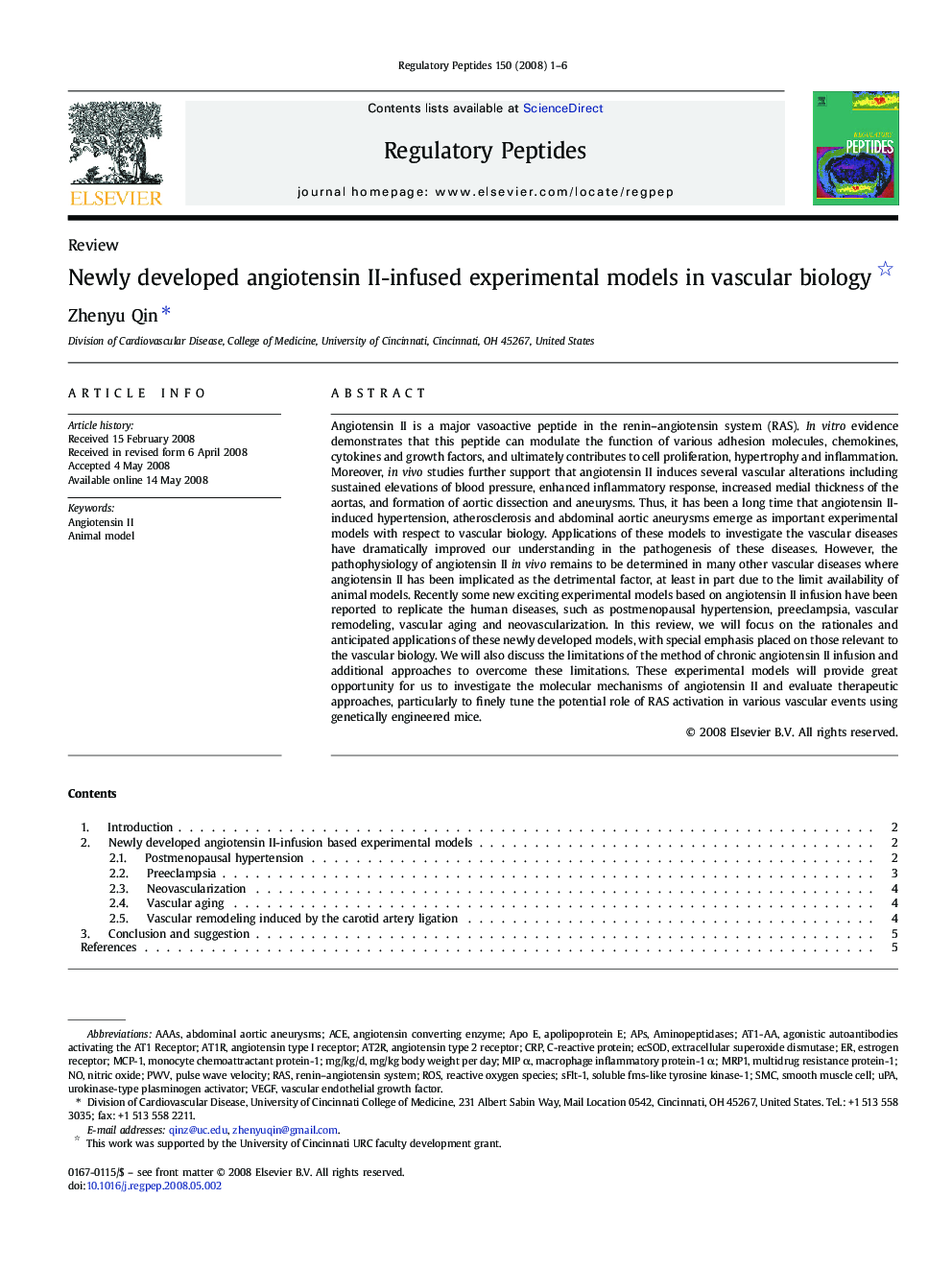| Article ID | Journal | Published Year | Pages | File Type |
|---|---|---|---|---|
| 2023111 | Regulatory Peptides | 2008 | 6 Pages |
Angiotensin II is a major vasoactive peptide in the renin–angiotensin system (RAS). In vitro evidence demonstrates that this peptide can modulate the function of various adhesion molecules, chemokines, cytokines and growth factors, and ultimately contributes to cell proliferation, hypertrophy and inflammation. Moreover, in vivo studies further support that angiotensin II induces several vascular alterations including sustained elevations of blood pressure, enhanced inflammatory response, increased medial thickness of the aortas, and formation of aortic dissection and aneurysms. Thus, it has been a long time that angiotensin II-induced hypertension, atherosclerosis and abdominal aortic aneurysms emerge as important experimental models with respect to vascular biology. Applications of these models to investigate the vascular diseases have dramatically improved our understanding in the pathogenesis of these diseases. However, the pathophysiology of angiotensin II in vivo remains to be determined in many other vascular diseases where angiotensin II has been implicated as the detrimental factor, at least in part due to the limit availability of animal models. Recently some new exciting experimental models based on angiotensin II infusion have been reported to replicate the human diseases, such as postmenopausal hypertension, preeclampsia, vascular remodeling, vascular aging and neovascularization. In this review, we will focus on the rationales and anticipated applications of these newly developed models, with special emphasis placed on those relevant to the vascular biology. We will also discuss the limitations of the method of chronic angiotensin II infusion and additional approaches to overcome these limitations. These experimental models will provide great opportunity for us to investigate the molecular mechanisms of angiotensin II and evaluate therapeutic approaches, particularly to finely tune the potential role of RAS activation in various vascular events using genetically engineered mice.
